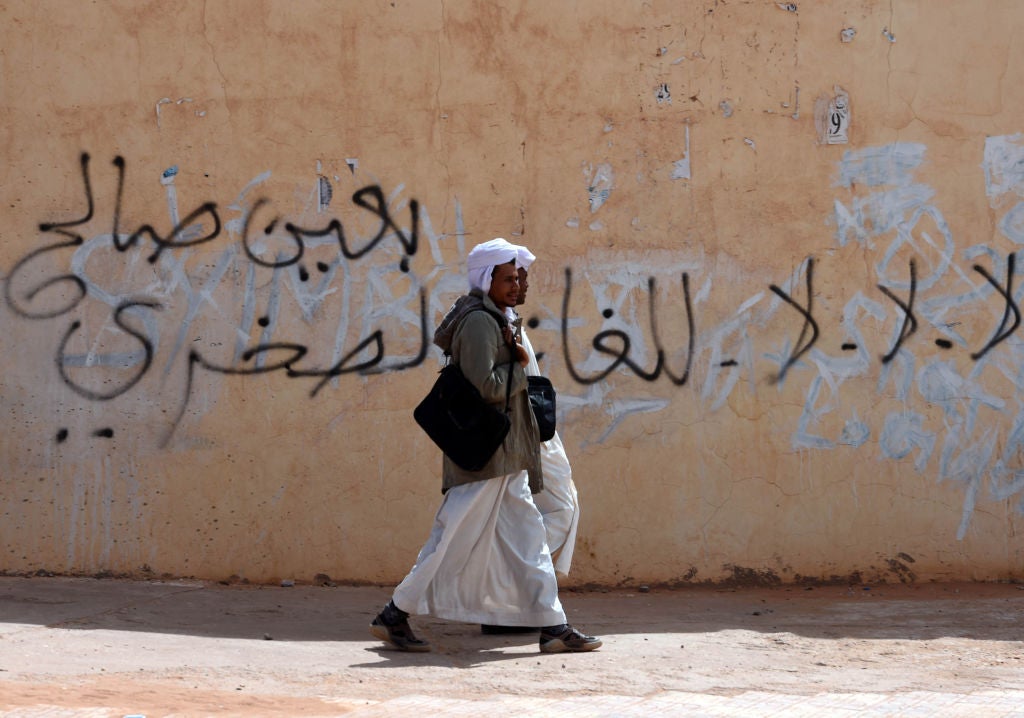A new era of fracking has emerged in the Middle East and North Africa (MENA). Across the region, countries are looking to boost production from shale or tight gas formations to supply energy products to Europe.
This investigation looks at how European energy policy is driving governments in North Africa to frack for gas. Meanwhile, experts and front line communities are warning that fragile water supplies in the desert are being threatened by the water-intensive fracking process.
Fracking involves drilling wells thousands of feet below the surface, then drilling directionally horizontally for up to two miles, before pumping a mixture of water, sand and chemicals (which are typically carcinogenic) into the formation. Countries including France, Germany and Scotland have banned fracking because of its environmental impacts, which include risks to the water supply, health risks related to the chemicals used, and potential seismic activity related to the intensity and depth of drilling.
Renewed interest in fracking for gas in the MENA region is being driven by two key factors: the accelerating energy transition and the need for new cleaner forms of energy, and Europe’s need to diversify its gas supply following Russia’s invasion of Ukraine.
With respect to the first reason, gas offers oil exporters in the MENA region the prospect of continuing to generate export revenue by producing a fuel that is less carbon-intensive than coal or oil, and still considered a 'transition fuel', before lower-carbon energy options are adopted in some policy circles.
It also offers the prospect of producing 'blue' hydrogen fuel: hydrogen gas produced by steam methane reforming, where waste carbon dioxide is captured by carbon capture and storage. This gas produces only water vapour when burnt, and has many real-world applications including in the production of steel and cement, as well as in the transport sector.
The opportunity presented by Europe’s energy crisis
Meanwhile, the past two years have seen European policymakers develop policies to dramatically alter where countries get their gas from, in response to Russia’s invasion of Ukraine. Norway and the US have supplanted Russia as the EU’s largest gas suppliers: Norway supplied 30% of its gas in 2023, while imports of US liquefied natural gas (LNG) tripled in 2023 compared with 2021, with the US now meeting 50% of EU LNG demand.
These shifting dynamics present an opportunity for the MENA region too, particularly via the Medgaz pipeline, which runs from Algeria to Spain, and the TransMed pipeline, which runs from Algeria to Italy via Tunisia. Last year saw a significant rise in natural gas production in Algeria, from 132.7 billion cubic metres (bcm) in 2022 to 136bcm in 2023. Miloud Medjelled, the director-general of prospection at the Algerian Ministry of Energy, has forecast an annual increase of 1.4% in natural gas production until 2028.
Egypt has also signed a memorandum of understanding (MOU) with the EU alongside Israel through which both countries are set to see a “significant” increase in LNG exports to the EU via Egypt’s LNG terminal in Beheira on the Mediterranean coast. Officials said that it would take a number of years for the MOU to take effect – but despite increasing domestic gas demand, Egypt already managed to boost LNG exports by 14% in 2022 to feed European demand, said the country's petroleum minister.
Algeria and Egypt are both developing a number of new gas fields across the country, with four in Egypt (Narges, Harmattan Deep, North El-Burg and Teen) and a further four in Algeria (Ahnet, the Isarene Complex, El-Assel and Issouane), according to data from GlobalData. These eight fields collectively hold 7.57 trillion cubic feet (tcf) of gas reserves (annual EU gas demand is currently around 12.4tcf, by comparison).
Tunisia is another country in MENA with big hydrocarbon ambitions. Gas production may be falling in the country: in the year to June 2023, for example, production in the Hasdrubal field (-4%), Southern Commercial Gas (-36%) and Miskar field (-10%) in the Maamoura concession all declined. However, state energy company ETAP has indicated that it is looking for more investment from international energy players to boost production. Data from GlobalData shows there are 12 gas fields ranked as ‘discovered’, meaning there are known gas reserves that have yet to have commercial viability determined.
As well as expanding conventional extraction, this investigation finds that all four countries just mentioned – Saudi Arabia, Egypt, Algeria, and Tunisia – have plans to expand fracking activities to make their gas production ambitions a reality.
Saudi Arabia and blue hydrogen
For decades, the kingdom of Saudi Arabia has been highly reliant on oil both for export revenue (equivalent to 40% of gross domestic product) and domestic energy supply (generating 39% of the country’s electricity). However, with a pledge to reach net zero by 2060, and a reformist prime minister in Mohammed Bin Salman, this status quo is changing. As part of the country’s Vision 2030 strategy, vast renewable energy projects and infrastructure programmes such as Neom – where a 170km-long net-zero city known as the Line is planned – are taking shape.
To power the new strategy, and supplant oil, Saudi Arabia is also investing heavily in natural gas. Domestic demand for natural gas is expected to increase by 3.7% annually until 2030, shows a December 2019 report from the King Abdullah Petroleum Studies and Research Centre – and at the heart of the transition towards gas is a vast new shale gas field, named Jafurah.
Jafurah is a vast site, covering approximately 17,000km². It holds reserves of 200 trillion standard cubic feet of natural gas, and Saudi Arabia is investing $110bn (SR412.5bn) in the field over its lifetime. The fact that most of the gas is held in shale formations means that Jafurah is also expected to be the largest fracking project outside of the US.
Western demand for low-carbon hydrogen and ammonia is also a key driver of the field’s development, with Saudi Arabia planning to transform much of the natural gas into blue hydrogen. Aramco – the state oil company – is planning to be a global leader in the low-carbon hydrogen industry, aiming to produce 11 million tonnes of blue ammonia by 2030, having already successfully produced and shipped the first load of blue ammonia from Saudi Arabia to Japan in 2020.
Aramco declined to provide a comment when asked about its operations in Jafurah.
“Saudi Arabia’s blue ammonia ambitions will get feedstock from Jafurah,” says Kate Dourian, non-resident fellow at the Arab Gulf States Institute in Washington. “They are still looking for offtake agreements, but to be fair to Aramco, there isn’t a blue ammonia market yet, and very few clean-hydrogen offtake agreements have so far been signed anywhere in the world.”
In the case of Jafurah, many of the typical concerns that arise around fracking are minimal. For starters, civil society opposition is next to impossible in autocratic Saudi Arabia. Moreover, the location of the field away from population hubs in the desert also means risks are minimised.
“It is in the Eastern Province, which is already an oil hub, and the water is going to be sea water, which prevents operations from threatening drinking water”, explains Dourian. “Nobody has been talking about environmental risk in any of the reporting so far.”
Jamie Ingram, senior editor at the Middle East Economic Survey, concurs. “Hydraulic fracturing is a key part of Jafurah development, but I would say there is minimal risk to settlements or water supply as the Jafurah Basin is in a sparsely populated region,” he says.
Saudi Arabia is not the only country fracking for gas in the MENA region, and where other countries are seeking to emulate Saudi Arabia’s example by exporting natural gas, there are often more serious concerns over the process’s impact on people and the environment.
Cracks in houses in Tunisia
At the start of the last decade, the house of Hamda Mansouri in the village of Awlad Noosir in the Bouhajla region of Tunisia developed cracks after the Canadian company Dualex began drilling to explore shale gas in the agricultural lands neighbouring his home. Mansouri and his family resorted to preparing meals in the same space where they slept, before they were eventually forced to leave the house over fears of potential collapse.
Just a few metres away, neighbour Mohammed Al-Muthannani, continues to face winter rainfall leaking through his roof as a result of similar cracks appearing in his own home in 2011. "After the exploration and surveying machinery arrived, and drilling commenced, our houses suffered damage,” Al-Muthannani explains. “Cracks emerged in the ceilings, leading to rainwater infiltration above our heads during the winter."
Mansouri and Al-Muthannani are just two among many impacted by the fracking activities of Dualex in the Bouhajla region, which lies around 217.6km from Tunis. Despite promises from the company to compensate for the damages incurred, more than a decade later, the affected individuals have yet to receive any substantial compensation. The company has long since ceased fracking operations, after it lost its drilling permit in 2016, leaving no acknowledgement or explanation of the damage caused to homes in the area, say residents.
The residents add that water levels have decreased since Dualex initiated exploration activities in Bouhajla, with effects felt to this day. “The drilling operations caused disease in the prickly pear trees, which then spread to the olive trees,” says Mansouri. “The wells, our primary water source for irrigating the olive trees, have dried up, leaving insufficient water for irrigation. Additionally, the water has become more saline; when used for olive tree irrigation, it leaves a thin white layer on the surface, indicating salt residue from the water."
Irrespective of fracking, water scarcity is a major problem in Tunisia. Per capita water withdrawal in Tunisia is less than 450m³, significantly below the absolute water scarcity threshold of 1,000m³. A 2019 conference paper looking at the impact of fracking on Tunisian water scarcity finds that fracking for gas could add 4–8% of additional water demand in Kairouan and 13–49% in Tataouine, two regions with hydrocarbon reserves.
Ridwan Al-Fatanasi, the head of the Tunisian Forum for Economic and Social Rights, accuses the Canadian company of failing to take any measures to ensure the safety of the residents. “The fracturing and drilling process was not sustainable,” says Al-Fatanasi. “It was marked by chaos in the usage and disposal of waste waters, which led to the emission of a chemical odour from the drilling site.”
Experts interviewed for this investigation – including Al-Fatanasi, and Sabriya Barka and Nidal Attia from the Heinrich Böll Stiftung Foundation – unanimously agree on the absence of any scientific research addressing the environmental impacts of hydraulic fracturing in Tunisia. All fracking endeavours have proceeded without scientific oversight, except for one incomplete attempt in 2016.
That study, commissioned by the Ministry of Local Affairs and Environment, was halted midway through, says Attia, after government agencies failed to supply sufficient data to the consulting company. Political instability and the health conditions associated with the Covid-19 pandemic further ensured it was not resumed, says Attia.
Dualex – which has since been renamed Spartan Delta Corp – was approached for comment about its former fracking operations but did not offer a response.
While fracking in Bouhajla may have ceased for now, the experience of residents demonstrates the risks faced by those in water-scarce areas where fracking is taking place. What is more, there are other locations in Tunisia where fracking is alleged to be ongoing.
Sharfeldin Yacoupi, president of the Tunisian Association of Public Monitors, comments: "The issue of shale gas in Tunisia lacks transparency, because there is no specific licence that differentiate[s] shale gas extraction from conventional gas extraction.” Yacoupi points out that the Petroleum Code, established in 1999, predates the emergence of shale gas, and accordingly lacks a legal framework around fracking.
Recoverable shale gas resources in Tunisia have been estimated at a massive 23 trillion cubic feet. The country has a history of allowing fracking to secretly take place despite the government saying that this would not be the case. In 2012, for example, Franco-British company Perenco said that all of its production was entirely conventional, which means that no fracking takes place. However, satellite analysis from the Heinrich Böll Foundation from a 2015 report indicates that Perenco was operating wells with facilities characteristic of hydraulic fracturing. The below image, taken from the report, shows fluid impoundments at drilling facilities that are characteristic of fracking, according to the authors.
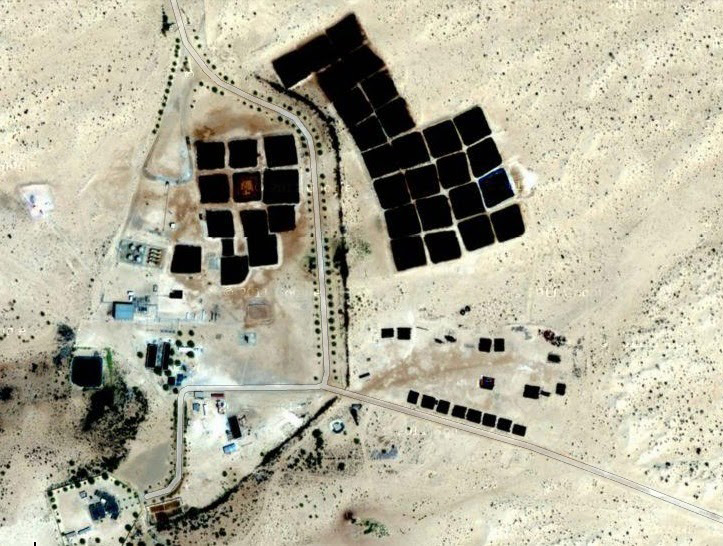
This investigation’s own analysis of satellite imagery from July 2023 shows that similar formations continue to appear in Tunisia, including the striking dark square fluid impoundments associated with fracking. The below image, for example, is from close to the listed geolocation of the El Franig field, which is operated by Perenco and state energy company ETAP.
Analysis of satellite imagery in this investigation is taken from mapping and flaring software provided by SkyTruth, a West Virginia-based non-profit environmental watchdog. John Amos, founder of SkyTruth and a former oil and gas exploration analyst, helped identify key visual signifiers of fracking operations.
The large quantities of water (10,000 and 20,000m³ to frack a single bedrock gas well) required to carry out hydraulic fracturing mean that any large, artificial body of water near drilling operations is indicative of fracking, says Amos. Multiple wells drilled next to each other is a clear indicator of directional or horizontal drilling, often associated with hydraulic fracturing to produce oil or gas from low-permeability rocks such as shale.
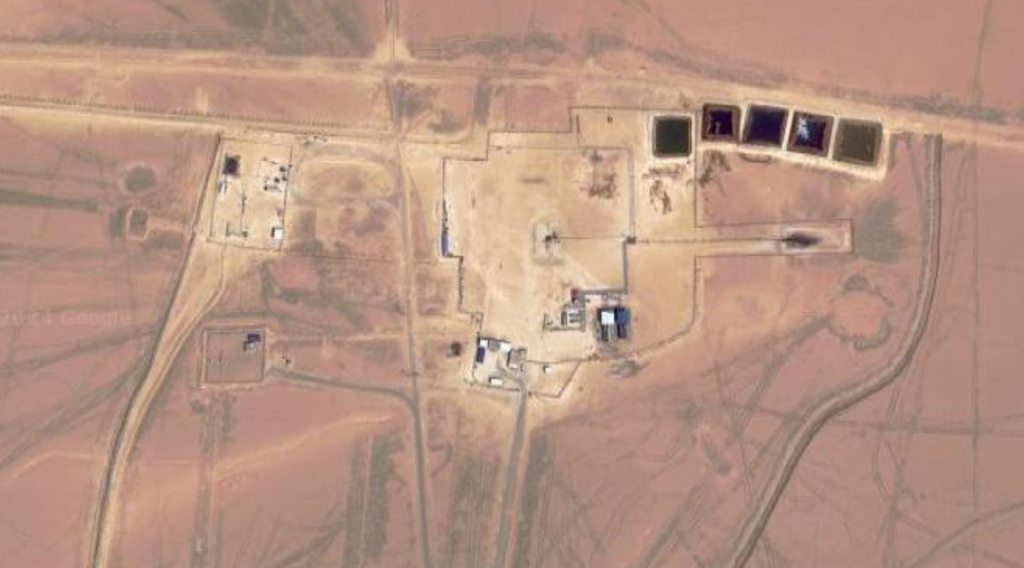
The below image is another example of a satellite image of gas extraction activities taken from close to the geolocation of the Sabria Field in Tunisia, with similar fluid impoundments associated with fracking. It is operated by Winstar Tunisia, a subsidiary of British oil company Serinus Energy.
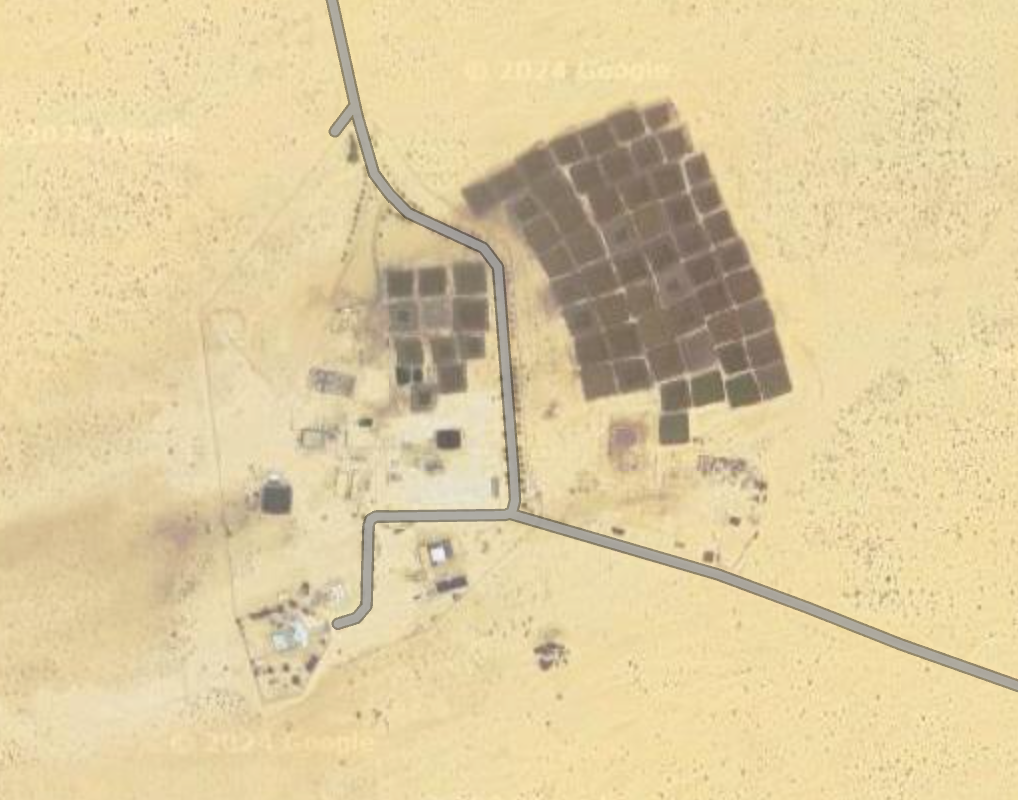
Operations at El Franig and Sabria are taking place within 20km of numerous villages in the west-central region of Tunisia, as the below satellite image shows.
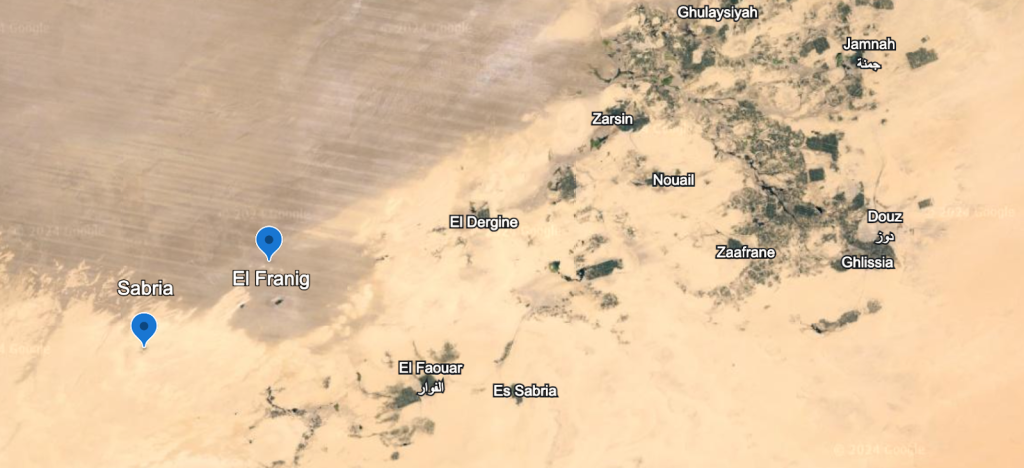
Serinus Energy offered no statement when approached for comment. A spokesperson for Perenco, meanwhile, said: “After extensive consultations, the practice of hydraulic fracturing has been permitted in Tunisia to stimulate conventional reservoirs. Before initiating such operations, Perenco consistently seeks approval from the relevant authorities by submitting impact studies and obtaining endorsements from environmental bodies and the Ministry of Oil.
“Perenco, along with other operators in Tunisia, may again employ this technique in compliance with the rules described above, to help maintain the productivity of our oil and gas fields.”
Drilling for tight gas reserves in Algeria
Algeria has vast untapped shale gas reserves estimated at 20 trillion cubic metres, the third-largest quantity of untapped shale gas resources in the world. However, after the government first announced its intention to begin fracking the resources in 2014, there was an unprecedented series of protests across the country.
Between December 2014 and May 2015, thousands of protesters appeared every day in the rural town of Ain Salah, in the heart of the Sahara, to protest against a $70bn (AD9.44trn) hydraulic fracturing project, amid widespread coverage on Arab television channels and social media. Men, women and children from the Sahara – a group already marginalised compared to those from the more prosperous north – voiced fears that the fracking experiment threatened the water supply and livelihoods in the desert.
Fracking tests had proved promising, but the government capitulated to the protestors and announced that fracking plans would not proceed. There are, though, tentative signs that this is not the end of the story.
“There are no official government plans to extract shale resources, but the government has created a separate tax regime for players in unconventional gas, which suggests there could still be some interest”, says Pranav Joshi, upstream research team lead for Africa at consultancy Rystad Energy. Elsewhere, in 2023, state energy company Sonatrach indicated that it is “committed” to increasing investment in shale, while ExxonMobil announced at the start of 2024 that it was “in talks” to explore for new opportunities in the country.
When asked whether future plans in the country would include fracking, a spokesperson for ExxonMobil said that the company “does not comment on details of commercial strategy”.
Activists certainly retain significant concerns over the prospect of more fracking in Algeria. “There is a feeling that when the government said they would not pursue fracking last decade, that this was actually just to silence the population and direct attention elsewhere,” says Hamza Hamouchene, an Algerian activist based in the UK. “Since then, there has been no information from official sources, and journalists or activists who would look into it are either in jail or understandably too afraid to look at themselves. If Algeria is undergoing fracking, nobody knows.”
Hamouchene says that fracking is a “major concern” because of water supply concerns in the desert regions where Algeria’s extractive activities take place. He adds that European demand for new sources of natural gas is a major driver for the Algerian Government. “The Algerian regime depends on gas extraction and the foreign currency it receives from European exports for its very existence,” he says. “At the same time, the government is afraid of domestic gas demand eating up too much supply as the population grows. Any opportunity to increase exports is critically important to them.”
This investigation has uncovered evidence that Algeria is indeed fracking to boost natural gas expansion, with plans to frack more in the future.
According to Nils Bartsch, head of oil and gas research at the German non-profit Urgewald, known fracking that is taking place is Algeria is not in shale resources, but instead in “tight” gas resources. These are conventional fields where rocks have very low permeability – such as sandstone or limestone – which require fracking in order to maximise extraction.
A field called Timimoun is listed as an active tight resource in French major TotalEnergies' Factbook 2020, as well as in the Integrated Report 2022 of a Spanish multinational called Cepsa, which is also working on the asset. Both companies are working on the field alongside Sonatrach, according to GlobalData’s listing of the field.
According to data from Urgewald, and verified against data from GlobalData, a further tight field, El Assel, is being developed by Sonatrach and Russian oil major Gazprom. Sonatrach has also announced plans to extract from a further tight field called Ahnet, according to GlobalData.
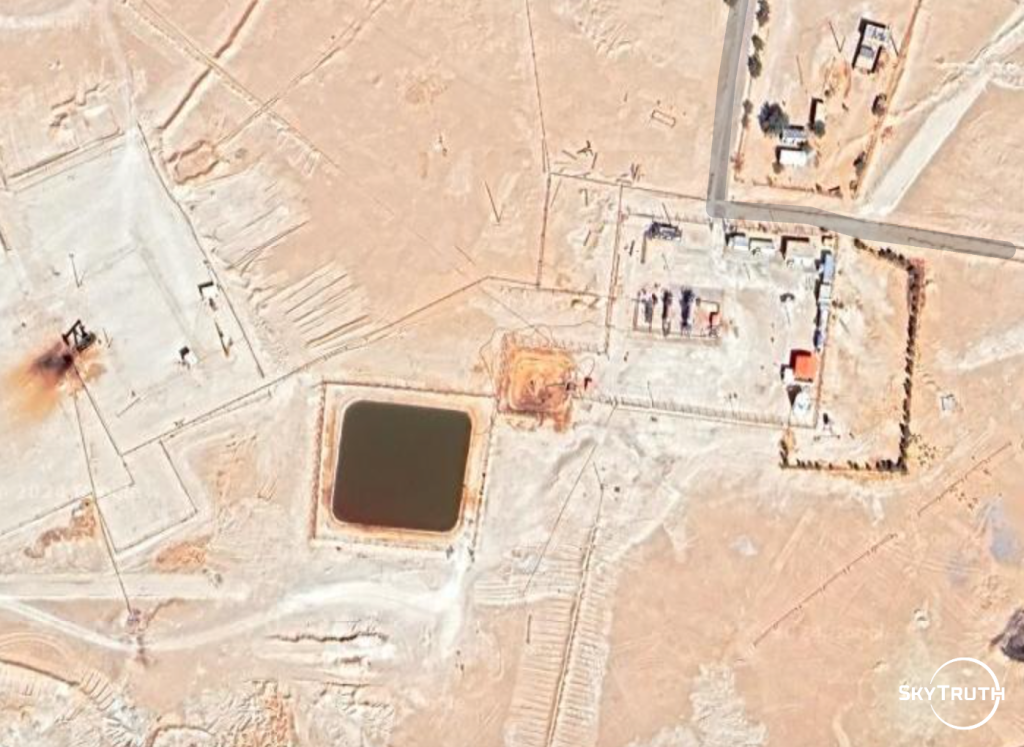
The above image of the Timimoun Field, taken from November 2023, offers several signs that could be indicative of fracking. For starters, the large square fluid impoundment that is away from any residential area, and measuring several hundred metres across, is suggestive of storing liquids required for fracking operations. At the top right of the impoundment is a flare stack, which is used to burn off escaping gas, and to the top right of the flare stack is a drilling site with what appears to be three drilled wells next to each other, a design that would serve little use unless horizontal fracking was taking place at this location.
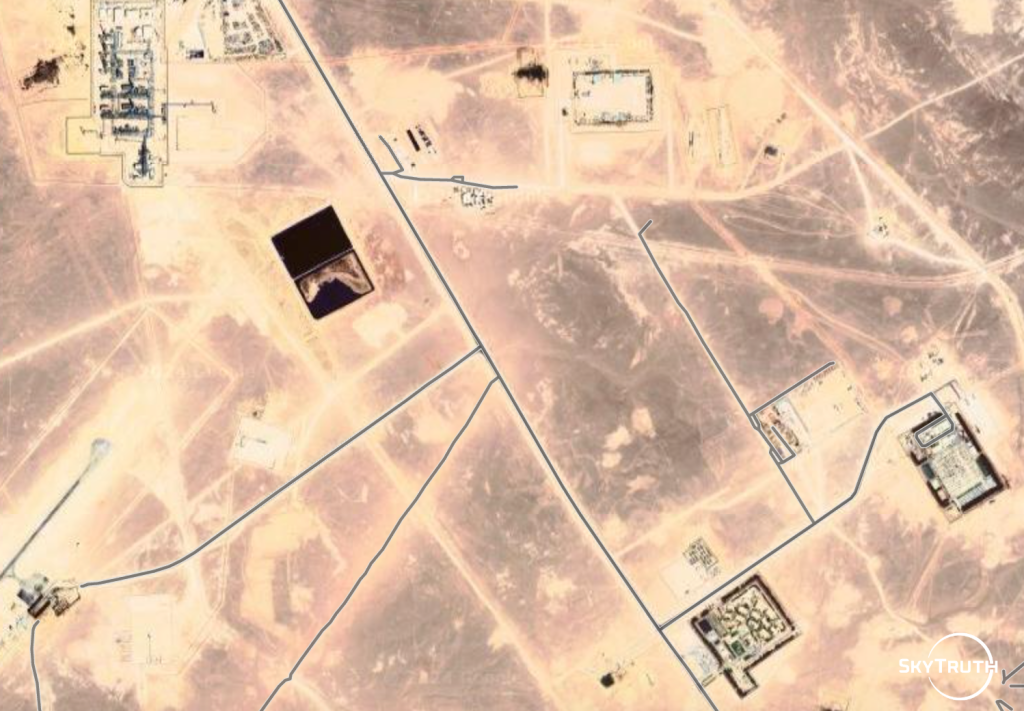
Other images of Timimoun, such as the one above, contain further images of large fluid impoundments, suggesting fracking is taking place across the field.
The proposed Ahnet Field – which remains under development – also poses a particular risk because it is situated near towns and settlements. The below map shows the centre of the proposed Ahnet Field, a tight field also set to include fracking, which is just a few kilometres from the towns of Aoulef, Akabli, Foggaret, In Ghar, In Salah and Tit.
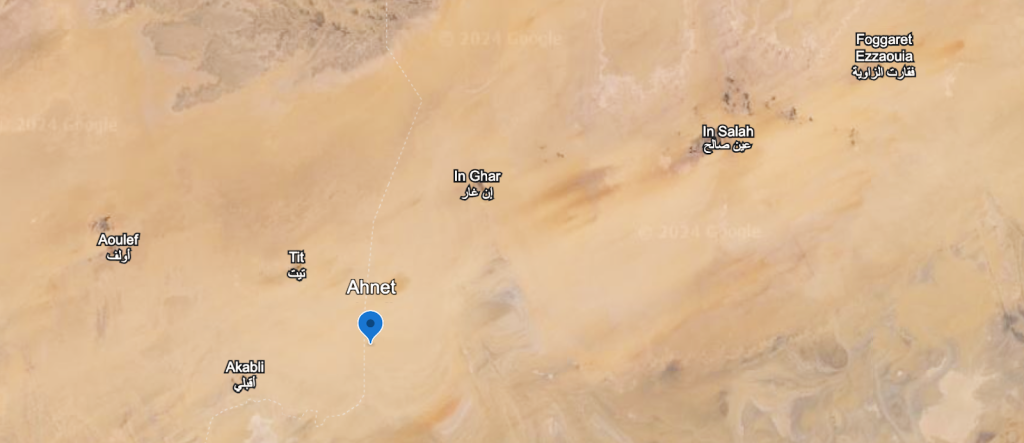
Gazprom, Sonatrach and TotalEnergies were all asked about fracking activities in Algeria, but did not offer a response to this investigation.
A spokesperson for Cepsa, meanwhile, said: “Cepsa is not involved in shale activities.
“In the past, multi-stage fracking technology was attempted in two non-shale producer wells in Timimoun, a field in which Cepsa has a minority stake. Cepsa has no current plans to implement the multi-stage fracking technology in any of its production operations or in any production operations where it has a stake.”
Compromising groundwater in Egypt
This investigation has also uncovered evidence that fracking is taking place in tight gas fields in Egypt, in order for the country to both supply the domestic market and increase exports to Europe.
Fracking for natural gas in Egypt is centred on Egypt’s largest onshore gas field, Obaiyed, and a number of other smaller assets in the Western Desert like the Apollonia Field, according to data from Urgewald, which has been cross-referenced with data from GlobalData and information from Rystad Energy. The companies involved in these assets include UK oil company Capricorn Energy and Egyptian oil company PICO Cheiron (in the case of Obaiyed), and Egyptian oil company Tiba Petroleum (in the case of Apollonia).
The below image shows parts of the Apollonia Field. There are two vast fluid impoundments, which indicate that fracking is taking place at this site, alongside two smaller fluid impoundments. To the top left of the impoundments are at least four wells alongside each other, indicating that horizontal drilling is taking place.
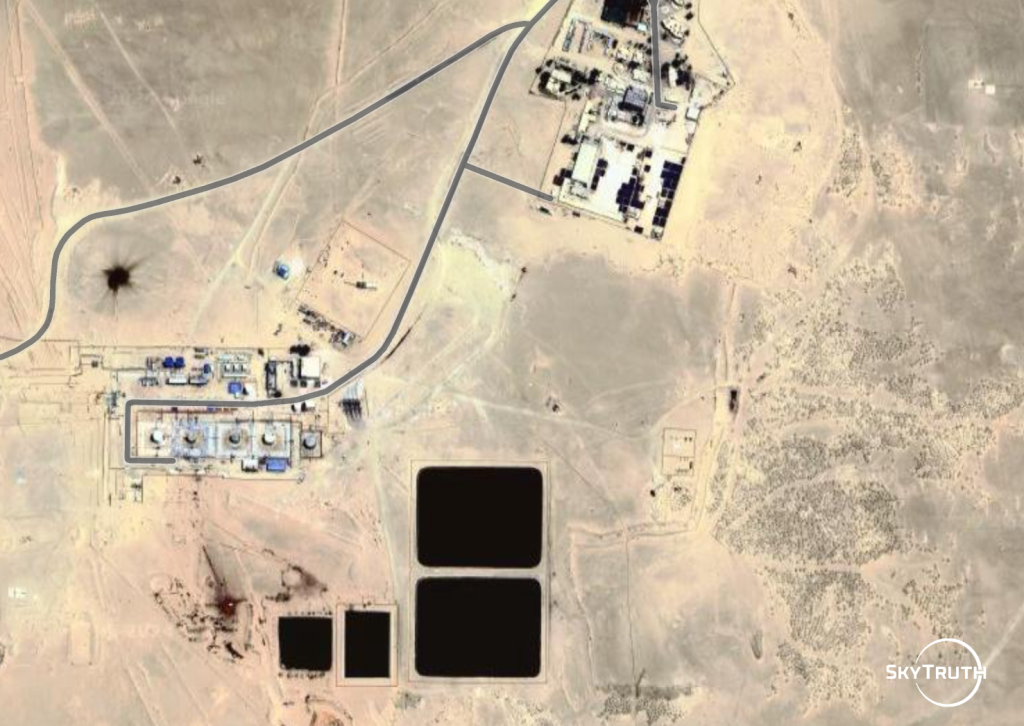
Dr Abu Talib Zaki, a researcher at Western Michigan University in the US, says that for the time being, the effects of hydraulic fracturing on groundwater in the Western Desert of Egypt have not been adequately researched, mainly due to insufficient data accessible to researchers. This includes details regarding the locations and scale of hydraulic fracturing activities, as well as the types of chemicals used in the process.
The Obaiyed Field, which also lies in the Western Desert, is shown in the image below. It includes a vast fluid impoundment, which is indicative that fracking is taking place, as well as evidence of multi-well drilling sites, which are indicative of the horizontal drilling required to frack.
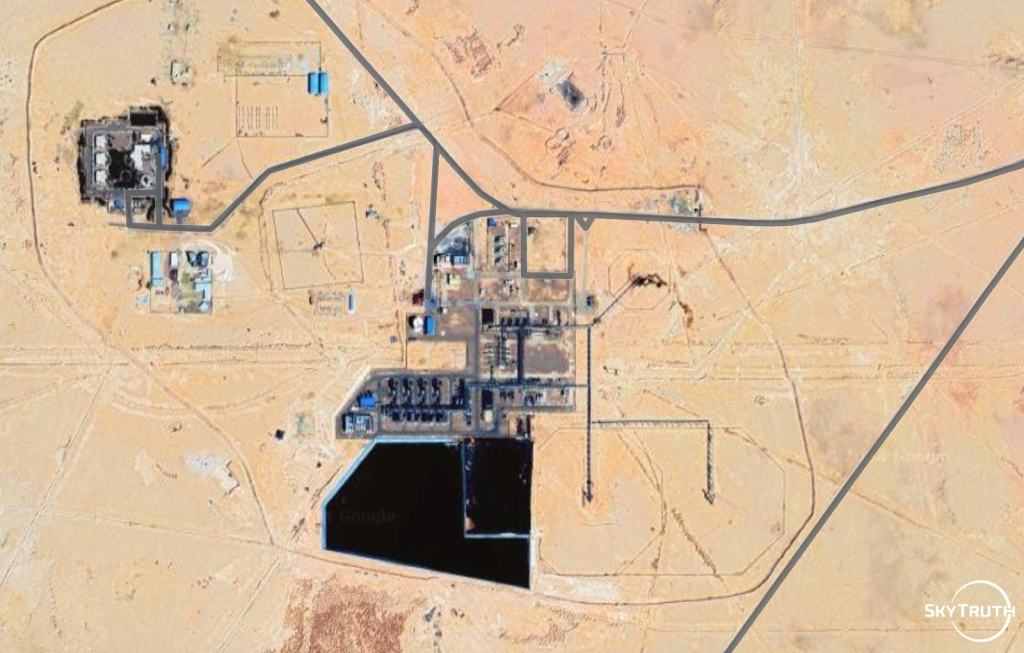
This investigation has also uncovered evidence of how fracking is having a detrimental impact on the lives of people living near fracking sites in Egypt.
Located directly next to the river Nile, just north of Aswan in the south of the country, the village of Faris is renowned for mango cultivation, with more than 25 varieties of the fruit harvested. Most of its residents rely on agriculture as their primary source of income, taking pride in their mango production and even hosting an annual festival dedicated to the mangoes produced in the village.
However, according to Abu Al-Qasim Abdel Shakour, the mayor of Faris, crop cultivation is increasingly difficult due to the fracking taking place at the nearby Al Baraka oil field, which lies just over 10km away from the village.
Over the past ten years, hydraulic fracturing triggered groundwater eruptions that have inundated farmland and residences, preventing effective land management. It has also affected the long-term quality of the soil by leading it to become mixed with sand.
“The water has destroyed my agricultural lands, which I inherited from my grandparents”, says Shakour. “I have not received any compensation, and I am not the only one in this situation. Many houses have also been destroyed, and what is lost cannot be regained”.
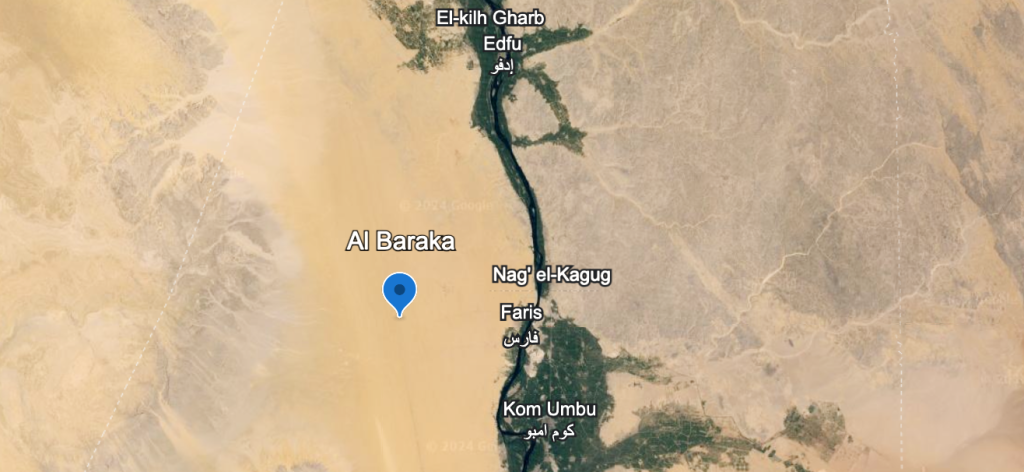
A source working for a US company that supplies fracking equipment in Egypt confirms – on account of anonymity – that fracking technology is regularly used in Egypt to enhance the efficiency of both oil and gas wells in the country.
“Fracking is widely used in Egypt to allow the extraction of resources from rock formations that are otherwise difficult to access,” says the source. “Fracking allows access to oil and gas reserves that were previously unreachable using traditional drilling methods, resulting in higher production rates.”
With the country’s oil and gas sector currently undergoing a $17bn investment programme to boost production, fracking – and its associated impacts – looks set to only increase across the country in the coming years.
With additional editorial support from Rehab Abdalmohsen. This investigation has been developed with the support of Journalismfund Europe, and co-published in Energy Monitor.


